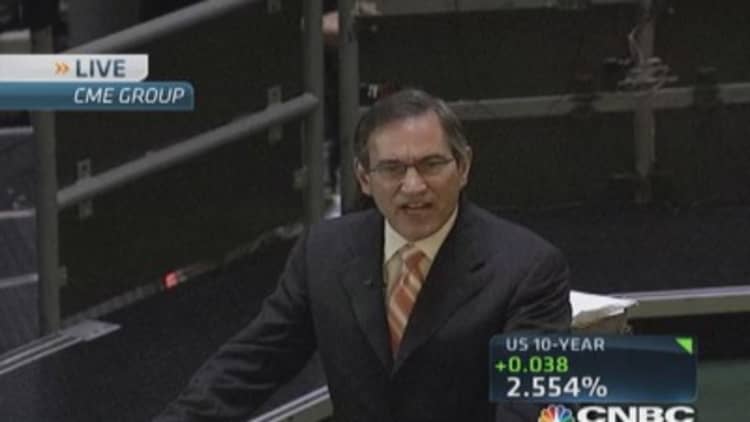The pace of growth in the U.S. manufacturing sector slowed very slightly in June, an industry report showed on Tuesday, though new orders accelerated to a six-month high.
The Institute for Supply Management said its index of national factory activity was 55.3 in June, almost unchanged from May's 55.4 reading. The report was modestly under the 55.8 reading expected by a Reuters poll of economists.
A reading above 50 indicates expansion.
Read MoreManufacturingexpands at fastest rate in over 4 years
The employment gauge was unchanged at 52.8, below expectations for a read of 53.2, while the forward-looking new orders subindex rose from 56.9 in May to 58.9, the highest reading since December. The production subindex fell to 60 from 61 in May.

A separate report showed U.S. construction spending rose less than expected in May, which could prompt a further downgrading of second-quarter economic growth estimates.
Construction spending edged up 0.1 percent to an annual rate of $956.1 billion, the Commerce Department said. However, April's construction spending was revised up to show a 0.8 percent rise, taking some of the sting out of the report.
Economists polled by Reuters had expected construction spending to advance 0.5 percent after a previously reported 0.2 percent gain.
The data was the latest to suggest the economy's rebound from a brutally cold winter could fall short of expectations. Growth contracted at a 2.9 percent annual pace in the first quarter, also weighed down by a slow pace of inventory accumulation by businesses.
Economists last week slashed their second-quarter growth estimates after weak consumer spending in May. Growth forecasts are now running as high as a 3.5 percent pace and as low as a 2.1 percent rate.
Construction spending in May was held back by a 0.3 percent decline in private construction projects, which offset a 1.0 percent rise in public construction outlays. Private construction is the largest portion of construction spending.
Private residential construction tumbled 1.5 percent, reflecting weak housing starts.
A run-up in mortgage rates has stymied the housing market recovery. Investment in home building and nonresidential structures such as factories and gas pipelines contracted in the first three months of this year for a second straight quarter.
Spending by the federal government dropped 8.9 percent, the largest fall since December 2010. State and local government projects increased a solid 2.0 percent.
--By Reuters
CORRECTION: An earlier version stated the incorrect month in the headline.

